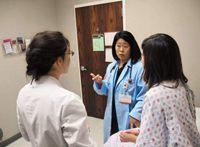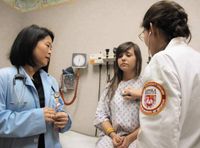Article
How to make the most of working with the next generation
Medical students are often sent to community offices to learn medicine in the community setting.

As you contemplate your next move, a tentative voice behind you says, "Doctor?" You turn around to gaze at a small, neat young woman in a short lab coat with an ID badge that reads "medical student."
"I'm Emily Mitchell, and I'm the medical student who will be working with you for the month."
PASSING THE TORCH

Teaching within a limited amount of time is challenging, and educating students may seem cumbersome in a busy practice. It is through time, trial and error, and experience that I've honed my skills and still stay on top of my clinical practice.
Here are some tips that you can use when trying to teach and stay on task:
1. Keep feedback regular.
A common request from our students is the desire to know how they are performing, because they are eager to correct any shortcomings. Feedback is best provided sometime during the course of each clinical encounter. Saving all criticisms and concerns until the end of teaching sessions may unpleasantly surprise students and result in some anxiety on your part, as I learned with one particular student.

Feedback can be a simple as, "Good presentation of Mr. Jones. The details you elicited are relevant to his case." Or, "Most of the information I need to know about you elicited, but remember to ask more details about the character of his cough."
As long as you make the effort to comment about aspects of students' presentations, examinations, or notes with every patient, you likely will provide sufficient feedback.





